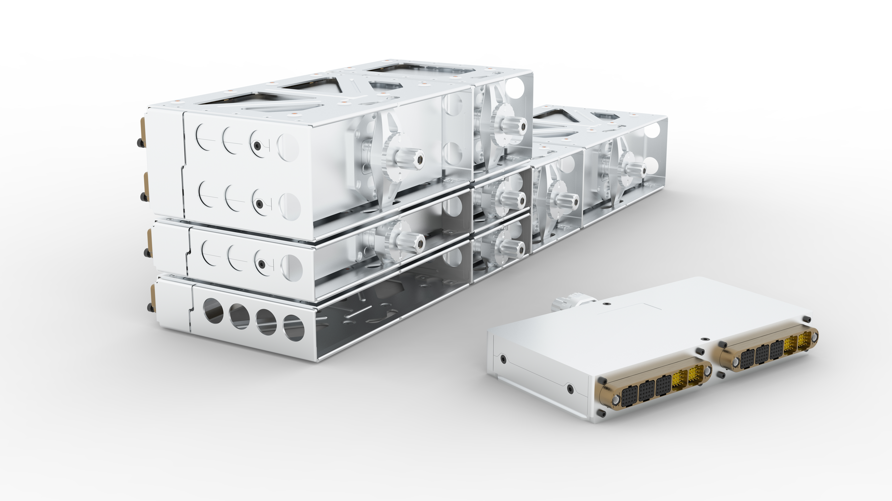
TE Connectivity (TE), a major connectivity and sensors company, has introduced a new five-bay connector shell configuration for its MiniMRP (Mini Modular Rack Principle) Avionics and Electronics Packaging product family. The modular avionics architecture, based on ARINC 836A standards, enables an estimation of up to 40% space savings and up to 60% weight reduction compared to traditional avionics systems, providing increased computing power in smaller, lighter packages, says the company.
TE’s MiniMRP solutions use commercial off-the-shelf components to reduce costs in developing distributed systems. The enclosures come in a range of sizes with ruggedized and lightweight options to suit the requirements of commercial aerospace and eVTOL (electric vertical take-off and landing vehicles), military aircraft, helicopters, unmanned aerial systems and ground vehicle applications.
“TE’s new five-bay connector shell offers an additional port and module compared to the four-bay solution, allowing increased input/output connectivity within the compact MiniMRP enclosures,” said the company is a press release. “The shell uses DMC-M connectors, the preferred interconnect solution for MiniMRP modules. The additional port enables increased I/O connectivity to further optimize size, weight and power reduction in next-generation aircraft.”
According to Kevin Goodwin, product manager at TE. “The latching mechanism is managed with one hand and doesn’t require any special tools, which allows quick insertion, release of the enclosure and ease of use within confined spaces.”
The MiniMRP enclosures and modules are designed to EN4165 and ARINC 836A standards for maximum compatibility. The miniaturized packaging is optimized to help meet stringent size, weight and power (SWaP) requirements. Furthermore, the MiniMRP concept helps enable the distribution of avionics and electronics throughout an aircraft, bringing intelligence closer to the point of need while decreasing the overall space claim of traditional centralized avionics.
For more information
https://www.te.com/en/home.html

